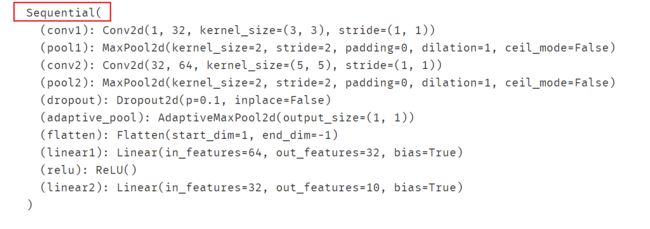6-2 pytorch中训练模型的3种方法
Pytorch通常需要用户编写自定义训练循环,训练循环的代码风格因人而异。(养成自己的习惯)
有3类典型的训练循环代码风格:脚本形式训练循环,函数形式训练循环,类形式训练循环。
下面以minist数据集的多分类模型的训练为例,演示这3种训练模型的风格。
其中类形式训练循环我们同时演示torchkeras.KerasModel和torchkeras.LightModel两种示范。
准备数据
transform = transforms.Compose([transforms.ToTensor()])
ds_train = torchvision.datasets.MNIST(root="./data/mnist/",train=True,download=True,transform=transform)
ds_val = torchvision.datasets.MNIST(root="./data/mnist/",train=False,download=True,transform=transform)
dl_train = torch.utils.data.DataLoader(ds_train, batch_size=128, shuffle=True, num_workers=4)
dl_val = torch.utils.data.DataLoader(ds_val, batch_size=128, shuffle=False, num_workers=4)
print(len(ds_train))
print(len(ds_val))
%matplotlib inline
%config InlineBackend.figure_format = 'svg'
#查看部分样本
from matplotlib import pyplot as plt
plt.figure(figsize=(8,8))
for i in range(9):
img,label = ds_train[i]
img = torch.squeeze(img) # 删除为1的维度
ax=plt.subplot(3,3,i+1)
ax.imshow(img.numpy())
ax.set_title("label = %d"%label)
ax.set_xticks([])
ax.set_yticks([])
plt.show()
一、脚本风格
脚本风格的训练循环非常常见。
net = nn.Sequential()
net.add_module("conv1",nn.Conv2d(in_channels=1,out_channels=32,kernel_size = 3))
net.add_module("pool1",nn.MaxPool2d(kernel_size = 2,stride = 2))
net.add_module("conv2",nn.Conv2d(in_channels=32,out_channels=64,kernel_size = 5))
net.add_module("pool2",nn.MaxPool2d(kernel_size = 2,stride = 2))
net.add_module("dropout",nn.Dropout2d(p = 0.1))
net.add_module("adaptive_pool",nn.AdaptiveMaxPool2d((1,1)))
net.add_module("flatten",nn.Flatten())
net.add_module("linear1",nn.Linear(64,32))
net.add_module("relu",nn.ReLU())
net.add_module("linear2",nn.Linear(32,10))
print(net)
二、函数风格
该风格在脚本形式上做了进一步的函数封装。
class Net(nn.Module):
def __init__(self):
super(Net, self).__init__()
self.layers = nn.ModuleList([
nn.Conv2d(in_channels=1,out_channels=32,kernel_size = 3),
nn.MaxPool2d(kernel_size = 2,stride = 2),
nn.Conv2d(in_channels=32,out_channels=64,kernel_size = 5),
nn.MaxPool2d(kernel_size = 2,stride = 2),
nn.Dropout2d(p = 0.1),
nn.AdaptiveMaxPool2d((1,1)),
nn.Flatten(),
nn.Linear(64,32),
nn.ReLU(),
nn.Linear(32,10)]
)
def forward(self,x):
for layer in self.layers:
x = layer(x)
return x
net = Net()
print(net)
三、类风格
此处使用**torchkeras.KerasModel(其源码其实就是脚本风格中的代码)**高层次API接口中的fit方法训练模型。
使用该形式训练模型非常简洁明了。
先构建模型,同一二。
from torchkeras import KerasModel
class Net(nn.Module):
def __init__(self):
super().__init__()
self.layers = nn.ModuleList([
nn.Conv2d(in_channels=1,out_channels=32,kernel_size = 3),
nn.MaxPool2d(kernel_size = 2,stride = 2),
nn.Conv2d(in_channels=32,out_channels=64,kernel_size = 5),
nn.MaxPool2d(kernel_size = 2,stride = 2),
nn.Dropout2d(p = 0.1),
nn.AdaptiveMaxPool2d((1,1)),
nn.Flatten(),
nn.Linear(64,32),
nn.ReLU(),
nn.Linear(32,10)]
)
def forward(self,x):
for layer in self.layers:
x = layer(x)
return x
net = Net()
print(net)
使用kerasModel:
from torchmetrics import Accuracy
model = KerasModel(net,
loss_fn=nn.CrossEntropyLoss(),
metrics_dict = {"acc":Accuracy(task='multiclass',num_classes=10)},
optimizer = torch.optim.Adam(net.parameters(),lr = 0.01) )
model.fit(
train_data = dl_train,
val_data= dl_val,
epochs=10,
patience=3,
monitor="val_acc",
mode="max",
plot=True,
cpu=True
)
训练过程:

其实编码训练代码按照自己的习惯即可,不必要按照以上三种方式。
参考:https://github.com/lyhue1991/eat_pytorch_in_20_days



